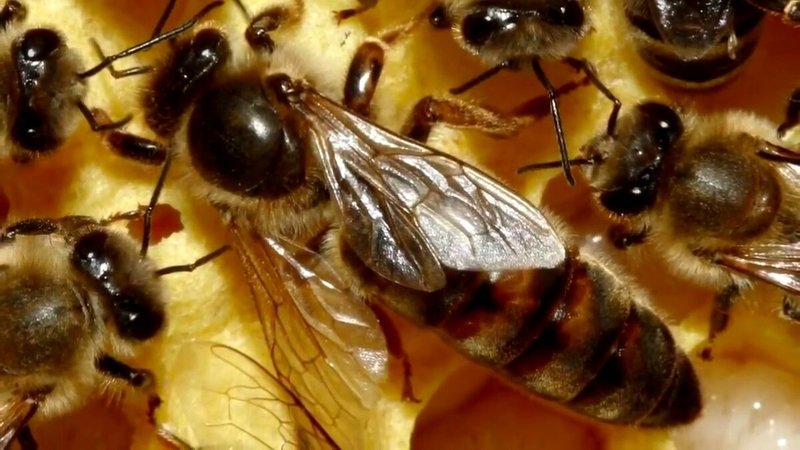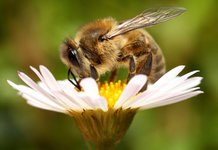
In the world of insects, not only bees make honey, bumblebees also make it. Just compared to bees, bumblebees do not harvest it for the future.
Honey is a finished and ready-to-eat product, and it all starts with nectar.

Nectar - This is the sweet liquid that flowers secrete, thereby attracting pollinating insects. This is a mutually beneficial union of plants and bees.
The process of turning nectar into honey is quite complex and it all starts with intelligence. Bees will never leave the hive unless there is accurate information about the presence of nectar in nature. This information is provided by scout bees.
This is a certain group of bees that deals all day long only looking for sources of nectar. After scout bee found a source of bribe, she fills her goiter with a small amount of it and returns to the hive.

In the hive she performs a special dancewhich attracts bee pickers. Through this dance, they receive accurate information about the honey plant and the distance to it, and to the nearest meter!
Having transmitted this information, the bee scout begins to alternately transfer a small drop of nectar to the bees to the pickers. This is necessary so that the collector bees know exactly what flowers they need to collect nectar from.
A bee returning to the hive with a full goiter of nectar, the guard meets a letka. This is another group of bees whose task is to let only their own ones into the hive. This is not a superfluous measure, because there are a lot of bee thieves who are ready to profit from what lies badly. The penalty for theft is death.

Theft cases most often occur with a weak bribe or its complete absence. With a strong bribe, the bees do not make sense to take this risky step, and so everyone suffices from what nature gives.
The bee-picker meets the picker in the hive. She takes a drop of nectar from the first and looks for a free cell to place it. Having found such a cell, it suspends a drop to the upper wall. In this position, moisture is easier to erode from nectar.
Remember at least how we dry the laundry, if it is put on the table, it will dry longer, and the hung much faster.

But on this, the process of converting nectar into honey is not finished. Now you need to break down complex mono sugars into simple ones, fructose and glucose.
The bee again sucks this drop into its goiter, and then burps it back. And so hundreds of times!
The jaw glands of a bee produce a special enzyme invertase. Without this enzyme, the process of splitting complex sugars is impossible.
Simultaneously with the inventory, moisture evaporates. Bees need to remove almost all excess moisture in the first day. Otherwise, nectar can ferment.
The more nectar brought, the more bees participate in its weathering. Such bees are called fans. They sit on the flight board, head in the direction of the taphole, and wave their wings intensively, if at this moment a burning match is brought up, it will go out. The weathering process does not stop even at night.

After the nectar has turned into honey, the cell needs to be sealed. For this, bees use wax. Sealed honey can be stored for many years. During the summer, bees prepare their honey reserves for a long winter. But we are also engaged in the conservation of food products. Agree, it’s nice to open in the winter a jar of pickled cucumbers or cherry compote, which were harvested from the summer.
By the way, you don’t need to preserve honey, he himself is an excellent preservative!


























